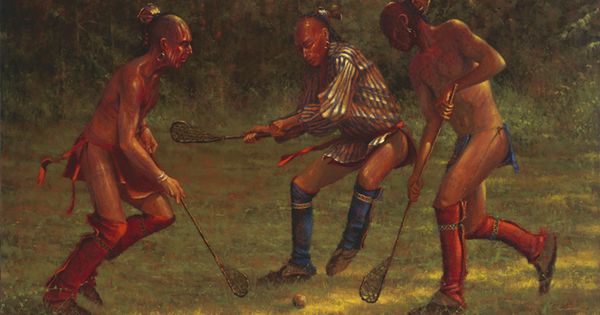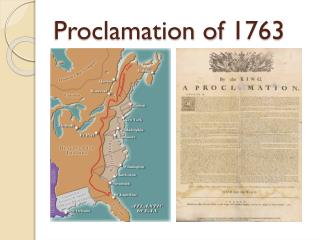The Seven Years War, experienced in the American Colonies as the French and Indian War, ended in 1763 with France ceding vast swaths of territory to the British.
Unlike their English counterparts, the French had cultivated friendships with their Indian allies. Many had married native women and been adopted into tribes. There were annual gifts of blankets, firearms and other European manufactured goods. The British under North American Governor-General Lord Jeffrey Amherst ceased such gifts, treating indigenous populations with contempt as English fortifications were built and settlers moved into traditional native lands.
The first grumblings among the tribes coalesced around a native visionary known only as the “Delaware Prophet”, who preached for a return to traditional ways and a rejection of the British. The cause was taken up by the Ottawa chieftain Pontiac (c.1720-1769). A powerful speaker, Pontiac’s message resonated with the Delaware, Seneca, Chippewa, Miami, Potawotomi and Huron, among others. The full-scale uprising known as “Pontiac’s Rebellion” broke out in May, 1763.
 Indigenous nations of the time divided more along ethnic and linguistic rather than political lines, so there was no monolithic policy among the tribes. At least one British fort was taken with profuse apologies by the Indians, who explained that it was the other nations making them do it.
Indigenous nations of the time divided more along ethnic and linguistic rather than political lines, so there was no monolithic policy among the tribes. At least one British fort was taken with profuse apologies by the Indians, who explained that it was the other nations making them do it.
The brutality of the period was anything but one-sided. The British “gift” of smallpox-infected blankets wasn’t the first instance of biological warfare in history, but this may be one of the nastier ones.
The siege of Fort Detroit beginning on May 7 was ultimately unsuccessful, but a series of attacks on smaller fortifications beginning two weeks later would all result in Indian victories. The fifth and largest of these fortifications, Fort Michilimackinac in present-day Mackinaw City, Michigan, was the largest such fort, and it was taken by surprise.

Local Ojibwas staged a game of baaga’adowe on June 2, (an early form of lacrosse), with the visiting Sauks in front of the fort.
Native American stickball had many variations, but the object was to hit a stake or other object with a “ball”. The ball was a stone wrapped in leather, handled with one or sometimes two sticks. There could be up to several hundred contestants to a team, and the defenders could employ any means they could think of to get at the ball, including hacking, slashing or any form of physical assault. Lacerations and broken bones were commonplace. It wasn’t unheard of that stickball players died on the field. The defending team could likewise employ any method they liked to keep the opposing team off of the ball carrier. The game took place on a field that could range from 500 yards to several miles.

Soldiers at Fort Michilimackinac enjoyed the game, as they had on earlier occasions. When the ball was hit through the open gate, both teams rushed in as native women handed out weapons previously smuggled into the fort. Fifteen of the 35-man garrison were killed in the ensuing struggle. Five others were tortured to death.
Three more forts were taken in a second wave of attacks, when survivors took to the shelter of Fort Pitt, in Western Pennsylvania.

Here’s when the chapter is written, about the smallpox blankets. The episode has taken on aspects of legend and remains the subject for debate, to this day.
Smallpox had broken out at this time, among the besieged garrison at Fort Pitt. At a June 24 parlay, Captain Simeon Ecuyer, a 22-year veteran Swiss mercenary in the British service, gave besieging Lenape warriors several items taken from smallpox patients. Ecuyer wrote that “We gave them two blankets and a handkerchief out of the smallpox hospital”. Captain William Trent of the garrison militia later wrote in his journal: “I hope it will have the desired effect.”
This appears to be the only documented case of such a tactic, but the stratagem was by no means disapproved. The use of smallpox infected items was discussed in positive terms between Amherst and another Swiss mercenary, Colonel Henry Bouquet, but the siege at Fort Pitt was ended by more conventional means.
 Some sixty to eighty Ohio valley Indians died of the disease following the Fort Pitt episode, but the outbreak appears isolated. Meanwhile, Indian warriors had looted clothing from some 2,000 outlying settlers they had killed or abducted.
Some sixty to eighty Ohio valley Indians died of the disease following the Fort Pitt episode, but the outbreak appears isolated. Meanwhile, Indian warriors had looted clothing from some 2,000 outlying settlers they had killed or abducted.
Six years earlier, native Americans ignored terms of surrender negotiated between their French allies and English at Fort McHenry in upstate New York, and broke into the garrison hospital, killing and scalping a number of patients. At least some of these were suffering from smallpox. The episode reportedly touched off an outbreak among native populations.
The siege of Fort Pitt culminated in a bloody fight on August 5, when an incoming relief force of some 500 troops met the Indian besieging force at the bloody Battle of Bushy Run.

All the while, Delaware and Shawnee war bands raided deep into Pennsylvania territory. Panicked settlers fled eastward, as unknown numbers of men, women and children were killed or taken captive. The “Paxton Boys”, a group of Scots-Irish frontiersman from the modern-day Harrisburg area, murdered some twenty Conestoga, a mostly Christian band of subsistence hunters and farmers who had nothing whatever to do with the fighting.
Many of these peaceful Indians fled east to Philadelphia for protection. Several hundred Paxton residents marched on the city in January, 1764.

The presence of British troops and Philadelphia militia prevented further violence, as Benjamin Franklin met with leaders of the two sides to negotiate an end to the crisis. Mr. Franklin may have had the last word on the collectivist nonsense which afflicts to this day, when he asked “If an Indian injures me, does it follow that I may revenge that Injury on all Indians?”
Pontiac’s Rebellion ended in a draw, in 1765. The savagery inflicted on both sides meant that segregation and not interaction, would characterize relations between Indians and whites.
 The British Royal Proclamation of October 7, 1763, drew a line between the British colonies and Indian lands, creating a vast Indian Reserve stretching from the Appalachians to the Mississippi River and from Florida to Newfoundland. For the Indian Nations, this was the first time that a multi-tribal effort had been launched against British expansion, the first time such an effort had not ended in defeat.
The British Royal Proclamation of October 7, 1763, drew a line between the British colonies and Indian lands, creating a vast Indian Reserve stretching from the Appalachians to the Mississippi River and from Florida to Newfoundland. For the Indian Nations, this was the first time that a multi-tribal effort had been launched against British expansion, the first time such an effort had not ended in defeat.
The British government had hoped through such a proclamation to avoid conflicts like Pontiac’s Rebellion, but the decree had the effect of alienating colonists against the Crown.
For native Americans, the terrible smallpox epidemic of 1837 – ’38 all but wiped out the Mandan and decimated the Arikara and Hidatsa, Missouri River bands who farmed corn, beans & squash and hunted buffalo only as a sideline. Estimates of the number killed in the epidemic range from 17,200 to an implausible high of 150,000, merging with the blanket episode of seventy-five years earlier and spawning a narrative of deliberate white genocide against indigenous Americans.
Smaller bands of isolated plains Indians were less hard hit, tipping the balance and forever altering the world’s ideas of what American Indians, looked like. Works Progress Administration murals from the 1930s depict Pilgrims interacting with coastal tribesmen, wearing Sioux war bonnets and war shirts decorated with glass beads. No Lenape, Wampanoag, Pokanoket or Nauset of the time would have so much as recognized such an outfit, let alone dress that way.



Stickball sounds like rather a violent game! Something from a future world not a past one!
LikeLiked by 1 person
I think that’s one game I’d rather watch than play, Andy.
LikeLiked by 1 person
Definitely!
LikeLiked by 1 person